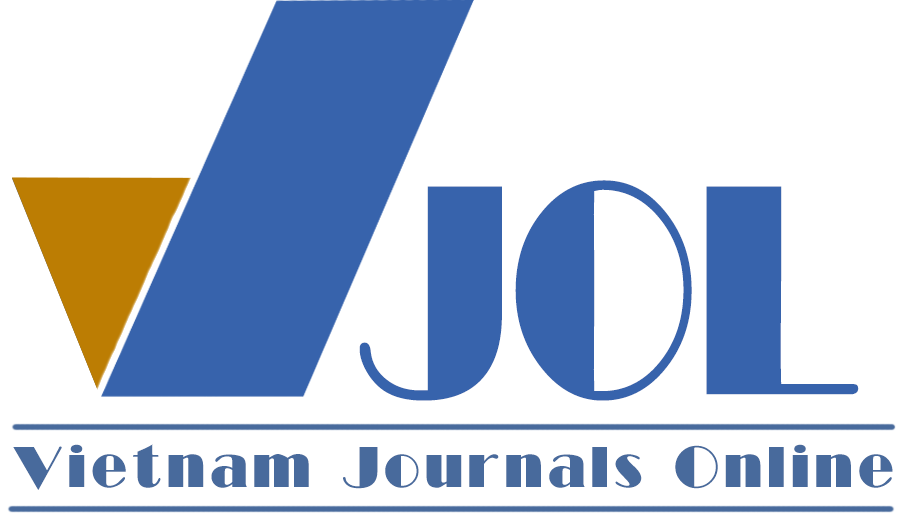THREE PHASES OF TECHNOLOGY IN SINGAPORE MATHEMATICS EDUCATION
DOI:
https://doi.org/10.18173/2354-1075.2024-0132Keywords:
Technology in education; scientific calculator; problem solving; online platforms; flipped learning; generative AIAbstract
This paper discusses the changes in classroom instructions due to technology over the years in mathematics education, and how these changes have impacted mathematics learning and teaching. The impact on learning can be seen over a few phases in Singapore: The use of scientific and graphing calculators has allowed the focus on the developing of higher-order thinking skills, while at the same time de-emphasizing routine computation. With the introduction of various computer software such as spreadsheets, mathematics teaching, and learning have moved towards the next level of emphasis on coding and computational thinking. Technology can and has been harnessed by teachers to enhance student learning. These will be discussed in detail in the talk, with particular reference to the Singapore education context.
Downloads
References
[1] Hunter CB, (1979). The slide rule lest we forget. Science Activities, 16(4), 19-20.
[2] Sher DB & Nataro DC, (2004). The prosthaphaeretic slide rule: a mechanical multiplication device based on trigonometric identities. Mathematics and Computer Education, 38(1), 37-43.
[3] Ball G, (1997). Texas Instruments Cal-Tech, the World’s First Pocket Electronic Calculator. In http:// www.geocities.com/SiliconValley/Park/7227/caltech.html.
[4] Coleman T & Snape T, (1999). Calculator use in the primary school. Teachers and Curriculum, 3.
[5] Ellington AJ, (2003). A meta-analysis of the effects of calculators on students' achievement and attitude levels in pre-college mathematics classes. Journal for Research in Mathematics Education, 34(5), 433-463.
[6] Hembree R & Dessart DJ, (1986). Effects of hand-held calculators in precollege mathematics education: A meta-analysis. Journal for Research in Mathematics Education, 17(2), 83-99.
[7] Close S. Oldham E, Shiel G, Dooley T & O’Leary M, (2012). Effects of calculators on mathematics achievement and attitudes of ninth-grade students. The Journal of Educational Research, 105(6), 377-390.
[8] Ministry of Education Singapore. (1990). Mathematics syllabus (Lower Secondary). Singapore: Author.
[9] Ministry of Education Singapore. (2020). Mathematics syllabus (Lower Secondary). Singapore: Author.
[10] Wheatley GH & Wheatley CL, (1981). Calculator use and problem solving strategies of grade six pupils. In document besune SE 033 673 Higgins, Jon L., Ed. Research Reporting Sections, Annual Meeting of the National Council of Teachers of Mathematics (59th (p. 38).
[11] Wheatley GH & Wheatley CL, (1982). Calculator Use and Problem Solving Strategies of Grade Six Pupils. Final Report.
[12] Jiang Y & Cayton-Hodges GA, (2023). Investigating Problem Solving on Calculator Items in a Large-Scale Digitally Based Assessment: A Data Mining Approach. Journal for Research in Mathematics Education, 54(2), 118-140.
[13] Toh TL, Quek KS & Tay EG, (2008). Mathematical problem solving - A new paradigm. Connected maths: MAV yearbook, 356-365.
[14] Toh TL, Quek KS & Tay EG, (2008). Problem solving in the mathematics classroom (Junior College). National Institute of Education, Nanyang Technological University.
[15] Brunette W, (2006). Calculator in elementary school. In http://www.hop.edu.
[16] Reys B & Arbaugh F, (2001). Clearing up the confusion over calculator use in grades K5. Teaching Children Mathematics, 8(2), 90-94.
[17] Ministry of Education Singapore, (2007). Mathematics Higher 2 (Syllabus 9740). Singapore: Author.
[18] Dubinsky E, (2002). Reflective abstraction in advanced mathematical thinking. In D. Tall (Ed.), Advanced Mathematical Thinking. Springer. https://doi.org/10.1007/0-306-47203-1_7.
[19] Toh TL, (2009). On In-Service Mathematics Teachers' Content Knowledge of Calculus and Related Concepts. The Mathematics Educator, 12(1), 69-87.
[20] Toh TL, Toh PC, Teo KM, Zhu Y, (2021). A study of pre-service teachers' performance on two calculus tasks on differentiation and limit. European Journal of Mathematics and Science Education, 1(1), 1-13.
[21] Crouch CH & Mazur E, (2001). Peer instruction: ten years of experience and results. American Journal of Physics, 69(9), 970-979.
[22] Mazur E, (1997). Peer instruction: A user’s manual series in Educational Innovation. Prentice Hall.
[23] Gardiner AD & Bradley CJ, (2005). Plane Euclidean Geometry: Theory and problems. The United Kingdom Mathematics Trust.
[24] Coxeter HSM & Greitzer SL, (1967). Geometry revisited. Washington D. C.: Mathematical Association of America.
[25] Ayalon M & Even R, (2010). Mathematics educators’ views on the role of mathematics learning in developing deductive reasoning. International Journal of Science and Mathematics Education, 8, 1131-1154.
[26] Herbst P, (2002). Engaging students in proving: A double bind on the teacher. Journal for Research in Mathematics Education, 33(3), 176-203.
[27] Toh TL & Kaur B, (2021). Balancing an intuitive-experimental approach with mathematical rigor: A case study of an experienced and competent mathematics teacher in a Singapore secondary school. In Kaur, B., & Leong, Y. H. (Eds.), “Mathematics instructional practices in Singapore secondary schools”, 141-161. Springer Nature.
[28] Cribb M, (2023). The power of the voice in facilitating and maintaining online presence in the era of Zoom and Teams. The Electronic Journal for English as a Second Language, 27(2). https://doi.org/10.55593/ej.27106int.
[29] Dreyfus T, (2006). The role of cognitive tools in mathematics education. In Biehler R, Scholz RW, Strasser R & Winkelmann B (Eds.), “Didactics of mathematics as a scientific discipline”, 201-211, Springer Science & Business Media.
[30] Jankvist UT, Misefeldt M & Marcussen A, (2016). The didactical contract surrounding CAS when changing teachers in the classroom. Journal of Research in Mathematics Education, 5(3), 263-286.
[31] Fuchs E & Tsaganea D, (2020). Covid-19 pandemic and its impact on college teaching: The unexpected benefits and their consequences. Mathematics Teaching Research Journal, 12(3), 26-50.
[32] Lugosi E & Uribe G, (2020). Active learning strategies with positive effects on students’ achievements in undergraduate mathematics education. International Journal of Mathematical Education in Science and Technology, 1-22. https://doi.org/10.1080/ 0020739X. 2020.1773555.
[33] Ng WL, Teo KM, Wong KY & Kwan KL, (2019). The delivery role and assessment role of computer-based technology in a flipped university mathematics course.
[34] Fink H, (2021). Characterizing opportunities for mathematical and social participation: A micro-analysis of equity in small-group zoom interactions. In D. Olanoff, K. Johnson, & S. Spitzer (Eds.), Proceedings of the forty-third annual meeting of the North American Chapter of the International Group for the Psychology of Mathematics Education, 1191-1200, PME-NA.
[35] Koss L, (2022). Crowdsourcing solutions in the online mathematics classroom. International Journal of Mathematical Education in Science and Technology, 53(3), 603-609.
[36] Fung C, Besser M & Poon K, (2021). Systematic literature review of the flipped classroom in mathematics. Eurasia Journal of Mathematics, Science and Technology Education, 17(6), 1-17. https://doi.org/10.29333/ejmste/10900.
[37] Bergmann J & Sams A, (2012). Flip your classroom: Reach every student in every class every day. International Society for Technology in Education.
[38] Flipped Learning Network, (2014). The four pillars of F-L-I-P. In http://www.flippedlearning.org/definition.
[39] Muir T, (2019). Flipping the learning of mathematics: Different enactments of mathematics instruction in the secondary classroom. International Journal for Mathematics Teaching and Learning, 20(1), 18-32.
[40] Straw S, Quinlan O, Harland J & Walker M, (2015). Flipped learning research report. UK National Foundation for Educational Research and Nesta.
[41] O’Flaherty J & Phillips C, (2015). The use of flipped classrooms in higher education: A scoping review. The Internet and Higher Education, 25, 85-95.
[42] Ward M, Knowlton MC & Laney CW, (2018). The flip side of traditional nursing education: A literature review. Nurse Education in Practice, 29, 163-171.
[43] Toh TL, Cheng LP, Jiang H & Lim KM, (2016). Use of comics and storytelling in teaching mathematics. In Developing 21st Century Competencies. In “The Mathematics Classroom: Yearbook 2016”, Association of Mathematics Educators, 241-259, Association of Mathematics Educators.
[44] Toh TL & Lui HWE, (2014). Helping normal technical students with learning mathematics preliminary survey. Learning Science and Mathematics, 9(1), 1-10.
[45] Leong Y H, Tay EG, Quek KS, Toh TL, Toh PC, Dindyal J, Ho FH & Yap RAS (Eds.), (2013). Making mathematics more practical: Implementation in the schools. World Scientific Publishing Company.
[46] Leong YH, Tay EG, Toh TL, Quek KS, Toh PC, Dindyal J, (2016). Infusing Mathematical Problem Solving in the Mathematics Curriculum: Replacement Units. In: Felmer P, Pehkonen E, Kilpatrick J, (eds) “Posing and Solving Mathematical Problems”. Research in Mathematics Education. Springer, Cham. https://doi.org/10.1007/978-3-319-28023-3_18.
[47] Toh TL, Chan CME, Cheng LP, Lim KM & Lim LH, (2018). Use of comics and its adaptation in the mathematics classroom. In “Mathematics instruction: goals, tasks, and activities: Yearbook 2018”, Association of Mathematics Educators, 67-85. Association of Mathematics Educators.
[48] Toh TL, Cheng LP, Lim LH & Lim KM, (2021). Teaching lower secondary statistics through the use of comics. In “Mathematics-Connection and beyond: Yearbook 2020”, Association of Mathematics Educators, 33-53. Association of Mathematics Educators.
[49] Assaraf N, (2022). ChatGPT: Optimizing language models for dialogue. OpenAI. https://openai.com/blog.chatgpt/.
[50] Adiguzel T, Kaya MH & Cansu FK, (2023). Revolutionizing education with AI: Exploring the transformative potential of ChatGPT. Contemporary Educational Technology, 15(3), ep429.
[51] Health TLD, (2023). ChatGPT: Friend or foe? The Lancet: Digital health, 5(3), e102. https://doi.org/10.1016/S2589-7500(23)00023-7.
[52] Eke OD, (2023). ChatGPT and the rise of generative AI: Threat to academic integrity? Journal of Responsible Technology, 12, 100060. https://doi.org/10/1016/j.jrt2023.100060.
[53] Terwiesch C, (2023). Would charGPT3 get a Wharton MBA? A prediction based on its performance in the operations management course. Mack Institute for Innovation Management at the Wharton School, University of Pennsylvania.
[54] Heberer D, Pisano A, Markson & ChatGPT, (2023). As cited by the artificial intelligence of ChatGPT: Best practices on technology integration in higher education. Journal for Learning and Instruction, 8-12.
[55] Ipek ZH, Gozum AIC, Papadakis S & Kallogiannakis M, (2023). Educational applications of the ChatGPT AI system: A systematic review research. Education Process: International Journal, 12(3), 26-55.
[56] Kilinc S, (2023). Embracing the future of distance science education: Opportunities and challenges of ChatGPT integration. Asian Journal of Distance Education, 18(1), 205-237.
[57] Zhu C, Sun M, Luo J, Li T, Wang M, (2023). How to harness the potential of ChatGPT in education? Knowledge Management & E-Learning, 15(2), 133-152.
[58] Halaweh M, (2023). ChatGPT in education: Strategies for responsible implementation. Contemporary Educational Technology, 15(2), 1-11.







